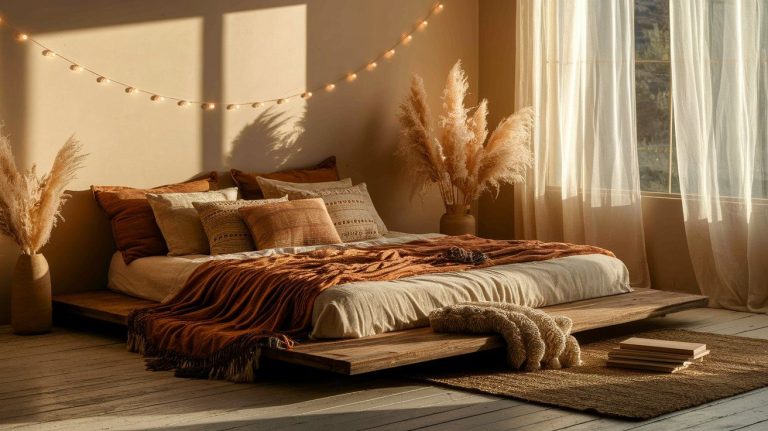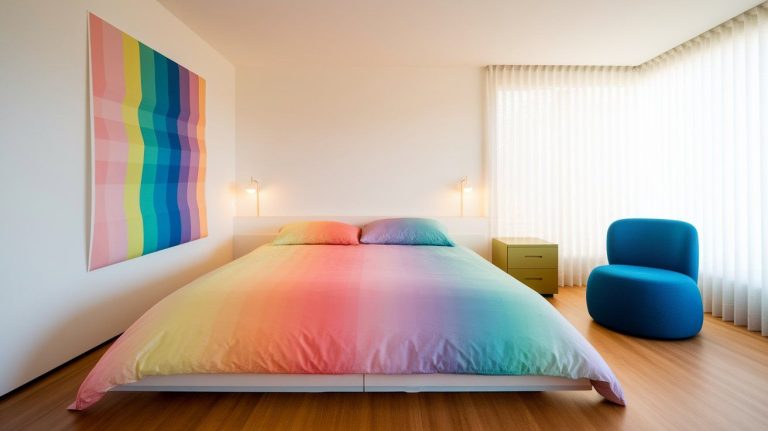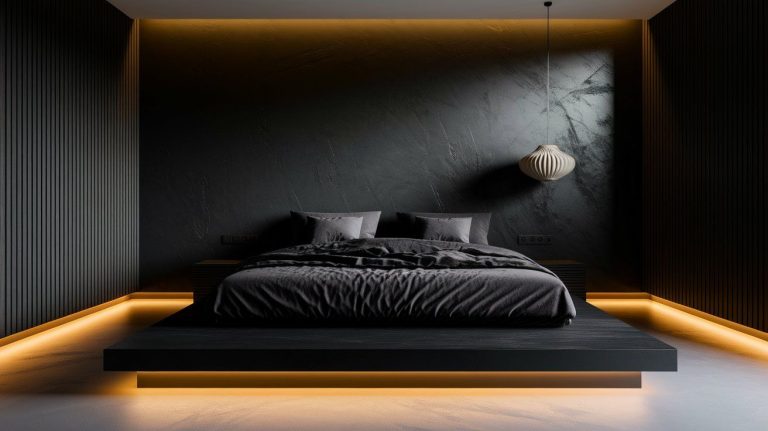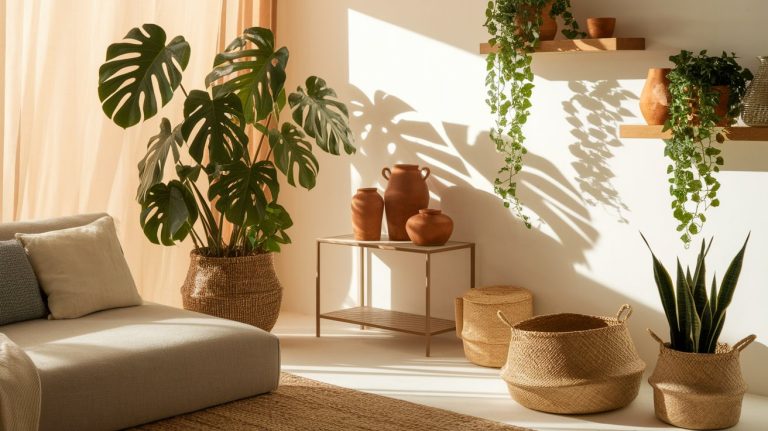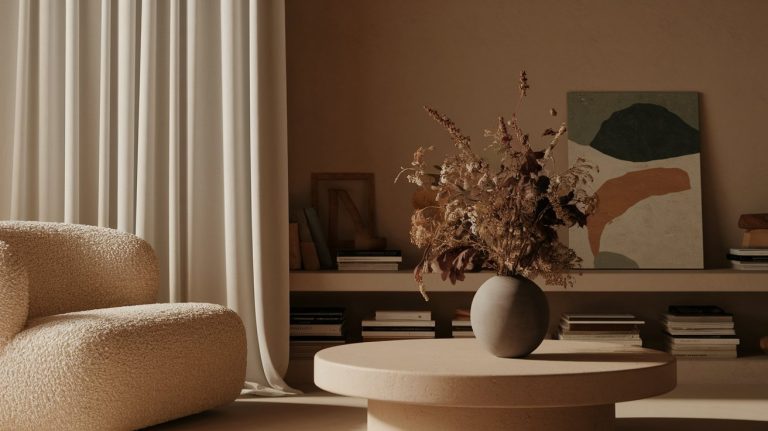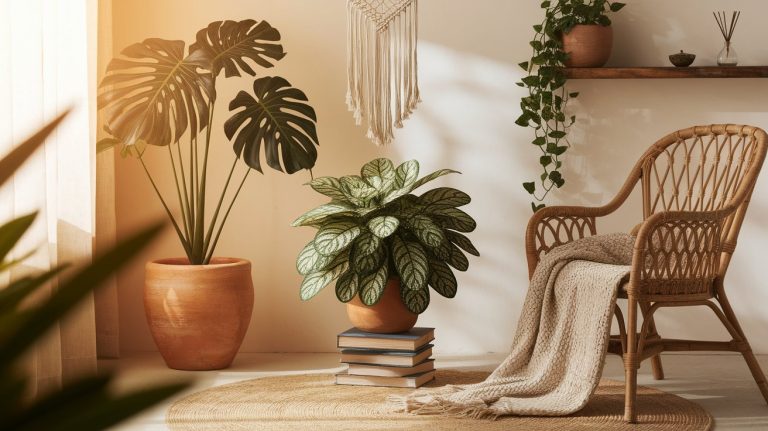Curating Space Inspo That Hits Harder Than a Mood Board at Midnight
Curating a space about tuning into what feels good, what sparks recognition, and what makes you want to stay a little longer.
This is not a guide for buying more. It’s a framework for thinking more clearly about how your space mirrors who you are, and what it says when you’re not looking.
1. Why Vibe Matters: The Psychology of a Well-Curated Space
Your space speaks. Before you sit down, before you breathe it in, it sets a tone. Whether it invites calm, sparks ideas, or weighs on you quietly depends less on square footage and more on how it’s curated.
Design psychology tells us the emotional impact of a room goes deeper than paint colors and throw pillows. Light quality, visual rhythm, material contrast, and object placement all shape the way we feel inside a space. What’s more: when your surroundings align with your internal state, clarity and ease follow.
Consider how a sun-drenched corner with an open chair and a warm-toned floor lamp makes you feel versus a cluttered room with no negative space. One leaves room for thought. The other overwhelms before you’ve even sat down.
Start by asking: What do I want to feel here? Energized? Rested? Grounded? The answers will start shaping your curation choices before a single object moves.
Would you like me to continue into Section 2: From Mood Board to Room Reality, or build this out directly in your post editor with layout recommendations? We can also shape a sidebar feature from this core.
2. From Mood Board to Room Reality
A well-curated space starts long before the first piece of furniture moves. It begins in your saved folders, your late-night scrolls, that mental Pinterest board you build every time you pass a well-lit café. But collecting inspiration is easy, translating that into your actual space takes curation, not copying.
The trick is noticing the patterns that keep showing up in your feeds. Are you saving lots of raw woods and cream linens? Saturated jewel tones with velvet curves? What you’re drawn to visually holds the blueprint for how you want your space to feel. Start documenting these common threads, color palettes, shapes, textures, moods.
Next, step away from the screen. Walk through your current space and compare it to the vibe you’ve been saving. What’s missing? What’s clashing? The goal isn’t to start over, it’s to bridge the gap between the digital and the real.
Curation means choosing with purpose, not just placing things that “match.” So when you start building your room, you’re not chasing a look, you’re building a feeling.
3. Find Your Style Without the Labels
Not everything has to be labeled “boho,” “minimalist,” or “Scandinavian.” In fact, the most magnetic spaces often don’t fit any one genre, they just feel like the person who lives there. That’s where true curation starts.
Start by asking better questions. Not “What’s trending right now?” but “What details do I never get tired of seeing?” Maybe it’s deep forest green. Maybe it’s stacks of books, warm brass, or brutalist lines. Curation isn’t about fitting into a category. It’s about identifying your emotional north and styling your space around it.
Create a style map built on feeling. Do you want your room to feel slow and grounded, or creative and kinetic? What textures and tones help you arrive there? Don’t be afraid to blend influences, linen next to chrome, thrifted art beside a clean-lined sofa. Rules matter less than resonance.
Your goal isn’t to match a trend. It’s to build a room that can’t be mistaken for anyone else’s.
4. The Curation Process: Build with Intention
This is where inspiration becomes action. Curating a space isn’t about filling it, it’s about layering it with purpose. Every object should either support the mood or spark a connection. This is where moodboard theory turns into lived-in atmosphere.
Start with the anchor. That one piece that holds the room’s emotional gravity. It could be a lounge chair in burnt velvet, a reclaimed wood desk, a floor lamp that throws cinematic shadows at 7 p.m. The rest builds around it.
Then set your palette. Not just color, but material, tone, and light. Maybe it’s a deep green paired with aged brass and linen. Maybe it’s muted sand and sun-bleached wood. Think of your palette as an emotional register, not a style rule.
Layer with contrast. Hard and soft. Matte and glossy. Straight edges and organic curves. Real depth comes from pairing opposites with care, like a concrete planter softened by a trailing fern or clean lines interrupted by a vintage rug.
Tell your story. This is the secret ingredient. Curated spaces feel different because they mean something. A framed family photo with a crooked border. A zine you made at 19. A chipped mug that always hits right. That story, that emotional texture, is what keeps the space from feeling like a set.
Use negative space with confidence. Not every wall needs something. Not every shelf needs styling. Breathing room amplifies the pieces you choose to keep.
Intention isn’t about perfection. It’s about clarity. You don’t need everything figured out, you just need every corner to feel considered.
5. Edit Boldly: Make Room for What Matters
Curation isn’t just about choosing what stays, it’s about knowing what needs to go. The most compelling spaces often have fewer things, not more, because each element earns its presence.
If something in your room feels like a placeholder, it probably is. Curation means calling that out. Maybe the wall art never felt right, or the side table’s just… there. This is your permission slip to subtract.
Try this: Remove five objects from your room. Don’t think. Just react. Step back. Does the space feel tighter or clearer? If it breathes easier, that’s clarity in motion.
You can also rotate instead of replace. Think seasonally or emotionally. Maybe spring brings in citrus tones and linen textures, while fall welcomes candlelight and stacked books. A curated space can evolve without constant shopping, it just needs you to keep showing up with fresh eyes.
Editing is how you turn taste into trust. It says you know what matters, and you know how to let go of what doesn’t.
6. Case Studies: Real-Life Stories in Curation
To make this more than theory, let’s look at how curation takes shape in real rooms, with real constraints, and real personality. These examples aren’t about perfection. They’re about spaces that feel lived-in, intentional, and expressive.
The Artist’s Apartment: Color as Emotional Compass Maya’s tiny walk-up is flooded with color, bold lilac walls, ochre cushions, a cobalt blue lamp with a cracked base she refuses to replace. But every color is curated to reflect how she wants to feel: grounded yet electric. Her space isn’t trendy. It’s kinetic. Art leans against the walls, half-hung, half-floating. Nothing is centered, but it works, because it reflects her rhythm.
The Renter Who Mastered the Edit Ben can’t drill a thing, not into the ceiling, not into the walls. But his space feels curated because everything pulls weight. A sculptural chair anchors the living room. Clip lamps and adhesive shelves create vertical interest. He rotates books and records on display like a gallery in motion. Nothing’s permanent, but everything feels placed.
The Sentimental Maximalist For Rina, every object has a backstory: postcards, hand-me-down quilts, vintage tins, ceramic frogs. It could feel chaotic, but she curates by theme and memory. Her wall of framed thrift-store sketches? All found on rainy days. Her bookshelf is arranged by scent, incense sticks, herbs, dried petals tucked between titles. The space hums because it’s deeply personal, unapologetically layered.
These rooms aren’t mimicking Pinterest. They’re reflecting real people who took time to listen to their lives, and curated accordingly.
7. Beyond the Visual: Layering Scent, Sound, and Energy
The most unforgettable spaces aren’t just styled, they’re felt. You walk in, and something shifts. The light’s softer. The air smells like cedar and citrus. There’s a warmth you can’t name, but it holds you. That’s because curation doesn’t end with visuals, it extends into atmosphere.
Scent is memory’s co-conspirator. Light incense before guests arrive. Use essential oils that anchor your mornings (eucalyptus, bergamot, clove). Your space becomes signature, not because of how it looks, but how it smells when someone walks in.
Sound sets tempo. A curated space has a soundtrack. It could be lo-fi jazz humming quietly, vinyl crackle from a corner, or even just silence broken by the breeze. Match your playlists to your corners: creative space, ambient chaos; reading nook, soft analog warmth.
Energy is flow. Not in the woo-woo sense, but in the way furniture placement can invite openness or tension. Let light move through the room. Let people move freely through the space. A curated room doesn’t trap, it releases.
This layer is what separates a designed space from a lived-in one. It’s not just what the room shows, it’s how it holds you.
8. Your Space, Your Story
A curated space is never finished, and that’s the point. Like a closet that shifts with seasons or a playlist you add to late at night, your space should grow with you, stretch as you stretch, and evolve as your perspective sharpens.
Curation isn’t about showing off. It’s about showing up, for your mood, your memories, your quiet obsessions. It’s about choosing pieces that don’t just look right, but feel true. A room that mirrors the inside of your mind isn’t chaotic. It’s intimate.
Start small. One corner. One shelf. One intentional object that says something about who you are, or who you’re becoming. Let it anchor you. Let it remind you that your space is yours to shape, and reshuffle.
Because when done right, a well-curated room doesn’t just impress. It resonates.
Conclusion: The Room Is an Extension of You
Forget decorating. This is about curating your environment with the same energy you give to your style, your playlists, or the photos you pin past midnight. Your space holds energy, memory, ambition. It should reflect who you are, and who you’re becoming.
When each corner is chosen, when the texture of a rug or the glow of a lamp mirrors what you feel inside, that’s not aesthetics. That’s alignment. And you don’t need permission, budget, or a design degree to start, just intention.
Curation is about showing up, not showing off. So walk into your room like it’s a mood board you get to live inside. Then start shaping the atmosphere that’ll hold your best thoughts, most chaotic mornings, and quietest breakthroughs.
Frequently Asked Questions (FAQ)
How is curating a space different from decorating a room? Decorating is about filling a room with objects that match. Curation is about choosing with intention, building around emotion, story, and the energy you want to feel. It’s less about how it looks, more about how it lives.
Where do I even start when curating my space? Start with one piece that holds personal weight, a chair, lamp, photo, or object you love. Build your palette and layout around that. Focus on feeling first, not function or style trends.
Can I curate a space on a tight budget? Absolutely. Curation isn’t about buying new things, it’s about editing what you already have, layering texture and lighting, and placing things with purpose. Thrift stores, swaps, and DIY projects can be incredibly powerful tools.
How do I know if my space is working? Ask yourself this: Does it feel like a place you want to stay in? Can you breathe there? Does it reflect where you are, or where you’re headed? If yes, you’re curating with clarity.
Do I need a specific design style to curate well? Not at all. Labels like “boho” or “minimalist” can be helpful for inspiration, but your space doesn’t need to fit into a trend. Think of it like handwriting, it’s uniquely yours when you stop trying to match someone else’s.

